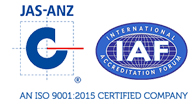 NEW PENSION SCHEME
NEW PENSION SCHEME
The New Pension System (NPS) is a government of India imitative to extend pension benefits to all Indian citizens. Any individual whether employed with private sector, self employed or professional can now avail of pension benefits and plan his or her retirement by enrolling in this scheme. The NPS is by far the least complicated, simplest and the lowest cost pension system.
Capital Protection:
As the scheme is regulated by the government of India, it is one of the most safe investment options with complete capital protection.
Inflation protection:
The New Pension System is a market-linked product which does not guarantee returns or inflation protection.
Guarantees:
There is no guaranteed return in the New Pension System.
Liquidity:
The New Pension System is liquid and allows for early withdrawal. At present there is no guideline on loan against the New Pension System, but this may come into effect in the future.
Credit Rating:
There is no credit rating on the New Pension System funds.
Exit Option:
If you retire before turning 60, you will be required to use 80 percent of your savings in your Tier-I account invested and the investment growth up to the point of exit from the New Pension System.
Other Risks:
There are no guarantees on investment as the New Pension System is a defined contribution plan and the benefits would depend on the amount invested and the investment growth up to the point of exit from the New Pension System.
Tax Implications:
Tax deduction on investments up to Rs 1 Lakh can be availed under the section 80C of the Income tax Act in each financial year. However, as per the current law, the amount received at the end from New Pension System would be taxable.
Where to open the account:
You can open an New Pension System account with Allahabad Bank, Axis Bank, Bajaj Allianz General Insurance, Central Bank of India, Citi Bank, Computer Age Management Services [CAMS}, Icici Bank, Idbi Bank, IL&FS Securities Services, Kotak Mahindra Bank, LIC of India, Orient Bank of Commerce, Reliance Capital, State Bank of India, State Bank of Bikaner, State Bank of Jaipur, State Bank of Mysore, State Bank of Hyderabad, State Bank of Indore, Reliance Capital, State Bank of Patiala, State Bank of Travancore, The South Indian Bank, Union Bank of India, UTI AMC and Post Offices.
How to open an account:
- Visit a point of presence {POP}, fill up the prescribed form with required documents which includes KYC compliance.
- Once registered, the Central Record keeping Agency [CRA] will send you a Permanent Retirement Account [PRAN] unique to every person.
- Select the amount you wish to invest and the investment option.
If You Are Not KYC Compliant You Will Need:
- 2 copies of Identity Proof.
- 2 Copies of Address Proof
- Proof of Date of Birth
- Self Declaration indicating not a pre-existing member of New Pension System
- Colored Passport size photograph
- ECS signed by the banker if you plan to initiate one.
Account Statement:
- You get a welcome kit when you sub-scribe to the New Pension System
- You also get an account number with statements detailing transactions.
Points to Ponder:
- Long lock-in
- Taxability: The contributions get tax benefit under Section 80C. However, at the time of withdrawal, the lump sum would be taxable as per the individual’s tax slab.
- It is a case of EET [exempt on contributions’ made, exempt on accumulation, taxed on maturity] unlike EPF and PPF which are EEE [exempt, exempt, exempt at all stages]
- Comparison to mutual funds – Since the New Pension System is meant for retirement and financial security, it does not permit flexible with drawls as per possible in case of mutual funds.
New Pension System for Government Employees:
All new government employees [central and state] who joined the services after Jan 1, 2004 will no longer have General Provident Fund [GPF] accounts and New Pension System account will be mandatory for them. New Pension System will work on defined Contribution basis and will have two parts – Tier 1, Tier 2. Government employees can exit after age of 60 years from Tier 1 scheme and it will be mandatory for them to invest 40% of pension amount to purchase an annuity through a Life Insurance Company. In case a member wants to leave New Pension System before age of 60, the mandatory annuity will be 80% of the pension amount.
- Tier I: Mandatory no withdrawal pension account – Monthly contribution will be 10% off basic salary and equal amount will be deposited by the Government this amount will be kept in a Non-Withdrawal pension Tier I account.
- Tier II: Voluntary withdrawal savings account – it will be voluntary Tier II with drawl account from which individuals can withdraw money any-time. There will be no contribution from the Government in this account.
List of Pension Fund Managers [PFMs]:
- Icici Prudential Life Insurance Company
- Idfc Asset Management Asset Management Company
- Kotak Mahindra Asset Management Company
- Relaince Capital Asset Management Company
- Sbi Pension Funds
- Uti Retirement Solutions
Investment Options and Structure:
Structure wise they are very similar 2 Unit Linked Investment Plan [ULIP] or Unit Linked Pension Plan {ULPP]. There will be different kind of funds Options with different exposure to:
- Equity Instruments
- Corporate Debt
- Fixed Income Instruments
- Government Securities
Investment Options:
- Risky Option: The higher allocation in this option will be in Equity. To decrease the risk, Equity investment is allowed only in the Index Funds. Which track Sensex or Nifty with the equity exposure is capped at 50%.
- Moderate: In this option most of the exposure would be to corporate debt and fixed income securities with some exposure in equity and Government securities. It will be moderately risky and rewarding.
- Safe: in this option mainly the Investment will be done in Government securities and very little will be invested in equities.
- Default option: Allocation will be decided on your age, with high equity allocation when you are young, which reduce as your age increases. You can also decide your Asset allocation as per your risk appetite.
Moreover, Individual also has choice from 3 different Asset classes: Equity {E type], Government Securities {G Type} and credit risk-bearing debit or Fixed income based Investment [C Type]
Active Choice Investment: Investor can mix E, C & G type options as per their choice proportionality.
- Auto choice investment: this is an auto choice life cycle fund and the investment allocation will be done based of investor age. In this scheme Equity scheme, Equity portion [Asset class E] will be 50% till age 35. After which it will reduce 2% per year until it becomes 10% by age 55. Credit risk portion [Asset class C] will be 30% till age 35after which it will reduce 1% per year until it becomes 10% by age 55.
- Investor will have option of investing monthly or Quarterly, but minimum 4 investments in a year is compulsory.
- As per the notification by PFRDA, currently only half of the investment can go into equities. Even if Investor choice the Equity type funds. This limit will only be reviewed after a year.
- There will be regular account statements to keep information transparent.
- Government has extended Swabalamban imitative under which will contribute Rs. 1,000/- per year [for a period of 4yeras] to every new pension scheme [NPS] account open this year with at least a matching contribution from the subscriber.
The New Pension Scheme in a Snap Shot:
Tier I Tier II
|
Registration
|
Registration through the pension accounting office [PAO] for Government subscribers and through POP service provider [POP-SP] for all other subscribers. |
Registration only through POP-SP for Government as well other subscribers, PRAN card to act as KYC, no separate documentation is required |
|
Contribution
|
Government Subscriber
- Mandatory contribution through PAO or the cheque drawing and disbursement office [CDDO] for government subscribers [10%+10% of Basic +D A per month] Other subscribers [all citizen except those mandatorily covered by NPS]
|
- Voluntary contribution through POP or POP-SP for Government as well as other subscribers.
- Minimum Rs. 1,000 at the time of account opening
- Minimum Rs. 250 per contribution
- Minimum balance of Rs. 2,000 at the end of each financial year
|
|
Scheme Preference
|
Unorganized sector subscribers
- 3 asset classes and 6 PFMs
- Availability of auto choice Government subscribers
- Default Scheme under Tier 1
- 3 PFMs
|
All subscriber shall have
- Choice of six PFMs and three assets classes [E,C,G]
- Availability of auto choice
|
|
Bank Account
|
Non Mandatory |
Mandatory |
|
Withdrawals
|
No withdrawals allowed during vesting period except as per the norms prescribed by PFRDA |
No limit on withdrawals |
 Preceding week, the Bombay Stock Exchange Sensex opened at 21080, attained a low at 20921 and moved to a high of 291961 before it closed the week at 21920 and thereby showed a net rise of 799 points on a week-to-week basis.
Preceding week, the Bombay Stock Exchange Sensex opened at 21080, attained a low at 20921 and moved to a high of 291961 before it closed the week at 21920 and thereby showed a net rise of 799 points on a week-to-week basis.







